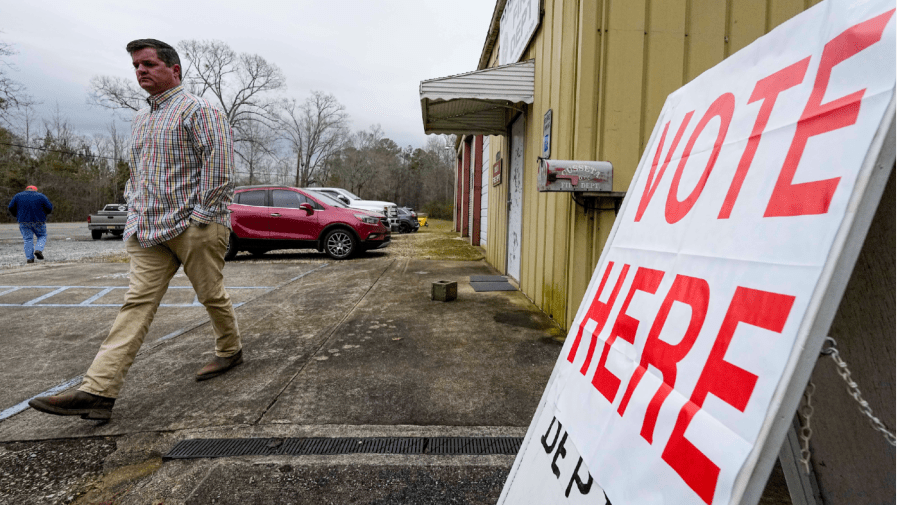When Donald Trump lost the 2020 presidential election, there was another loser: the polling industry.
The race was much closer than advertised. Polls overestimated support for Joe Biden by a sizable 3.9 percentage points in final national matchups. Polling for the 2022 midterms tended to be far more accurate, but here’s the thing: Trump wasn’t on those ballots. With pollsters already being criticized for supposed biases, they should find Trump’s return especially challenging.
They’ll try to correct the 2020 underestimation of President Trump. The question is how. Trump remains a wild card — someone who’s deviated from established Republican positions but still holds significant support and is making inroads with traditionally Democratic minority and working-class voters. This makes it particularly difficult to capture where many voters are accurately.
It’s also possible that this time around, pollsters are overcorrecting and underestimating Biden’s support. If not, it’s looking grim for the president lately. In a new Wall Street Journal poll, Trump leads Biden in six of seven swing states. If these findings bear out in November, Biden’s toast. His campaign communications director says current polls underestimate the president’s support, but it’s hard to know whether this is more than wishful thinking.
Clearly, there’s a lot we don’t know. But there are three areas of caution to watch for in the polls:
First, with lingering anger about the “stolen” 2020 election, Trump Republicans are increasingly choosing not to participate in polls. Trump continues to foment concerns about the fairness of our elections — from dissuading people from voting early to raising questions about voting machine accuracy. All of this contributes to a growing mistrust among many Republicans in the election process, including polling.
So, although a voter’s party affiliation tends to be one of the strongest indicators of who they’ll vote for, when it comes to polling, party affiliation isn’t as clear a predictor as it once was. The Republicans choosing to participate in polls tend to be less supportive of Trump than the full GOP electorate is. Therefore, actual Republican support for the former president is likely greater than what polls show. These days, asking participants who they voted for in the previous presidential contest tends to yield a more accurate understanding of what voters are thinking.
Second, during the primary season, there was some conjecture that polls overstated Trump’s support among GOP voters — that there might be more openness to Gov. Ron DeSantis (R-Fla.) or Nikki Haley than polls showed. This speculation turned out not to be true.
Longtime GOP pollster Whit Ayres said before the primaries that he believed a majority of Republicans were “Maybe Trump.” These candidates “voted for Trump twice and they’d vote for him again in a heartbeat against Joe Biden,” but “were open to considering other candidates either because they felt like Trump carried too much baggage or he might have difficulty winning.” If true, those Maybe Trumpers ended up breaking for the former president in the primaries.
By Ayres’s reasoning, these voters will support Trump again in the general election. But if they’re not hardcore MAGA believers, perhaps they can be swayed, in part because Trump is not currently doing anything to encourage non- or tepid-MAGA types to support him.
Joe Biden recently extended a small olive branch to Maybe Trumpers when his campaign released a new 30-second video targeted to Haley voters, suggesting they can find a home with his campaign. Although this appeal might not swing many Republicans, it may encourage enough of them to stay home on election day. This year, every little shift could make a difference.
Third, while there have been polling failures, some blame for unexpected election outcomes lies with voters themselves. What voters tell pollsters and what they do in the voting booth frequently don’t line up. This may especially be the case with non-traditional candidates like Trump.
U.S. News & World Report’s Lauren Camera observed last year that Trump’s 2016 White House win exhibited a “bizarro Bradley effect.” In 1982, Los Angeles Mayor Tom Bradley, who was Black, famously lost the California governor’s race although polls put him in front. It’s believed that polls inflated Bradley’s support because voters didn’t want to seem racist to pollsters.
It was the opposite situation for Trump in 2016 and 2020: Eventual Trump voters didn’t want to admit support for him to pollsters. Given Trump’s legal woes, we might see this backward Bradley effect again.
One thing we do know when it comes to 2024 polling is that, to borrow a term from Donald Rumsfeld, there are a lot of known unknowns. Pollsters are operating on shifting sands, and as hard as they try, they may not be able to fully and accurately project what voters will really do.
Jennifer Tiedemann is the executive editor of Discourse magazine at the Mercatus Center at George Mason University.
